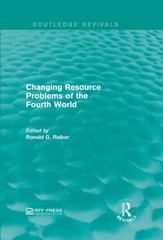Economies of food policy,
You are an economic policy analyst for Agriculture and Agri-food Canada. You are asked to consider the implications of three different scenarios affecting domestic production of dairy in Canada. Without supply management, the autarky price and quantity would be $50 per hectolitre (hl) and 1,000 hl, respectively. In autarky, the price elasticity of demand for milk from Canadian consumers is -0.5 (8) = -0.5) and the price elasticity of the Canadian supply of milk is 1 (2$ = 1). Assume that Canada is a small country in the world milk market and that the world price of milk is $40/hl. See the 3 pages from Schmitz, Furtan, and Baylis for an appropriate analytical approach to this problem (an attachment in the Assignment 2 folder on UMLearn) a) Find the equations for the Canadian domestic demand and supply functions. (Hint: they are both linear equations and can be derived from the autarky conditions described above). b) Draw a diagram showing equilibrium in the domestic market in a free trade regime. Assume transportation costs are zero. How much milk is imported? Identify the consumer surplus and producer surplus on the diagram. What are the values of consumer surplus and producer surplus? c) Suppose a supply management system is created that blocks all imports of milk and restricts domestic production to 600 his. Illustrate the situation on a diagram and identify the consumer and producer surplus, and the supply management-induced scarcity rent (quota value). What are the values of each of the following: consumer surplus, producer surplus, scarcity rent (quota value), and deadweight loss to society? d) Compare consumer and producer surplus in part c) to consumer and producer surplus in part b). What is the efficiency of the income transfer from consumers to producers? In other words, what must consumers pay for every dollar producers gain? e) Now consider the implications of granting limited import access to the supply managed Canadian market. The market access commitments increase allowable imports from 0 to 200 his (i.e. the import quota is set at 200 his). Assume that transportation costs are zero and that no tariff is applied to imports. Also assume that domestic production quota is adjusted in response to the increased market access (using a monopoly pricing rule). Illustrate the situation on a diagram. What are the values of each of the following: consumer surplus, producer surplus, scarcity rents (domestic quota value and import quota value), and deadweight loss to society? f) Compare consumer and producer surplus in part e) to consumer and producer surplus in part b). What is the efficiency of the income transfer from consumers to producers? In other words, what must consumers pay for every dollar producers gain







